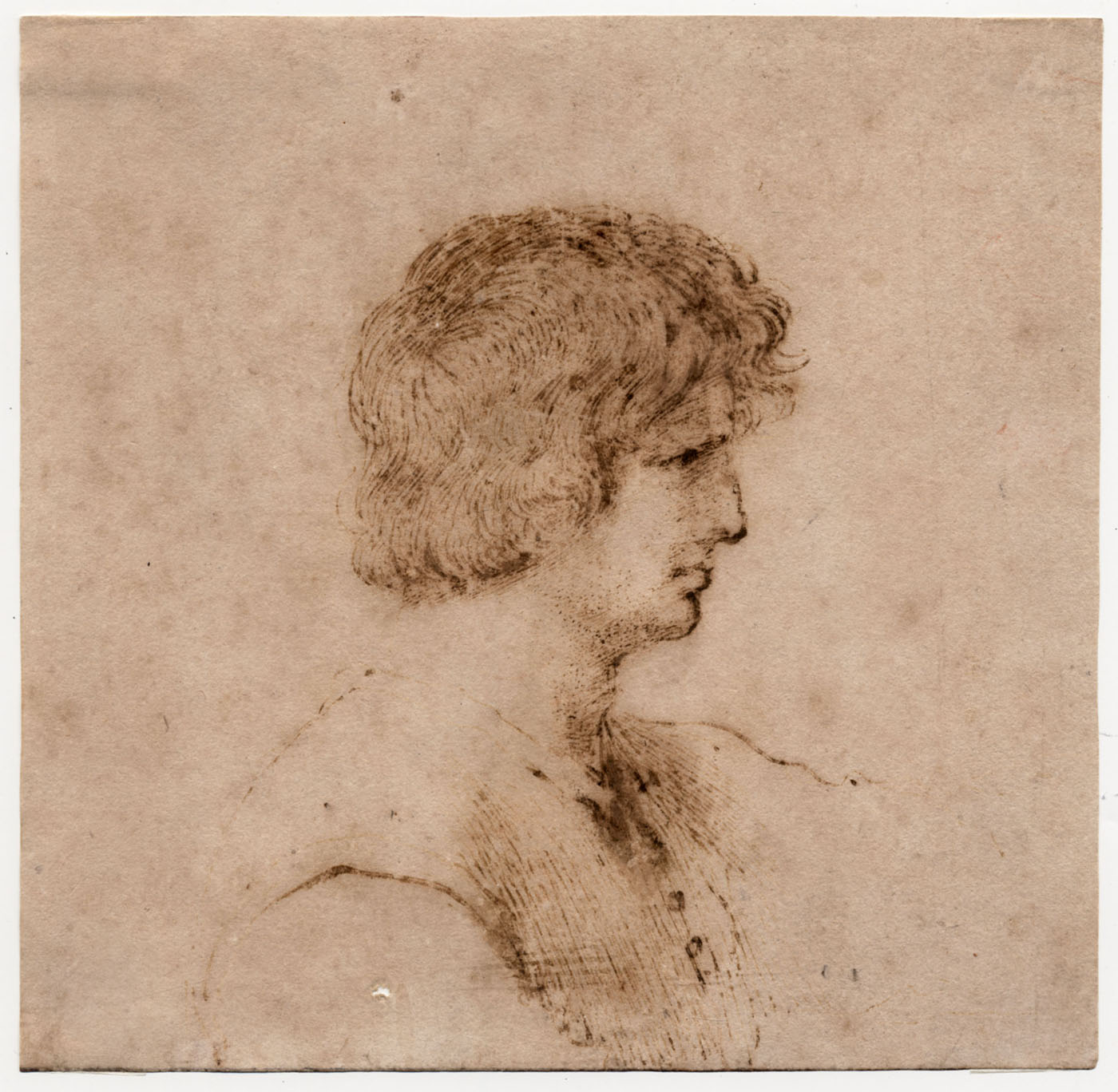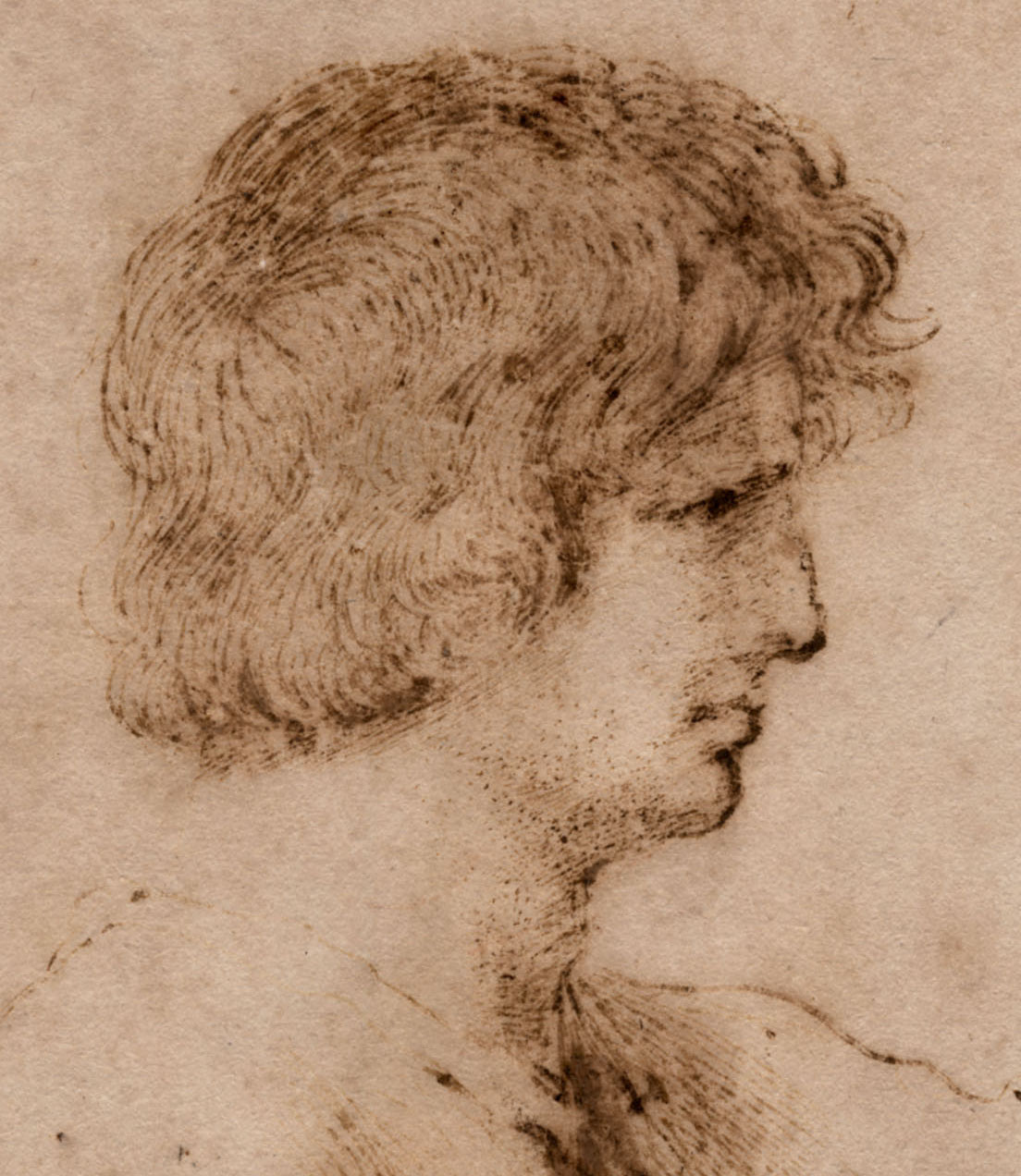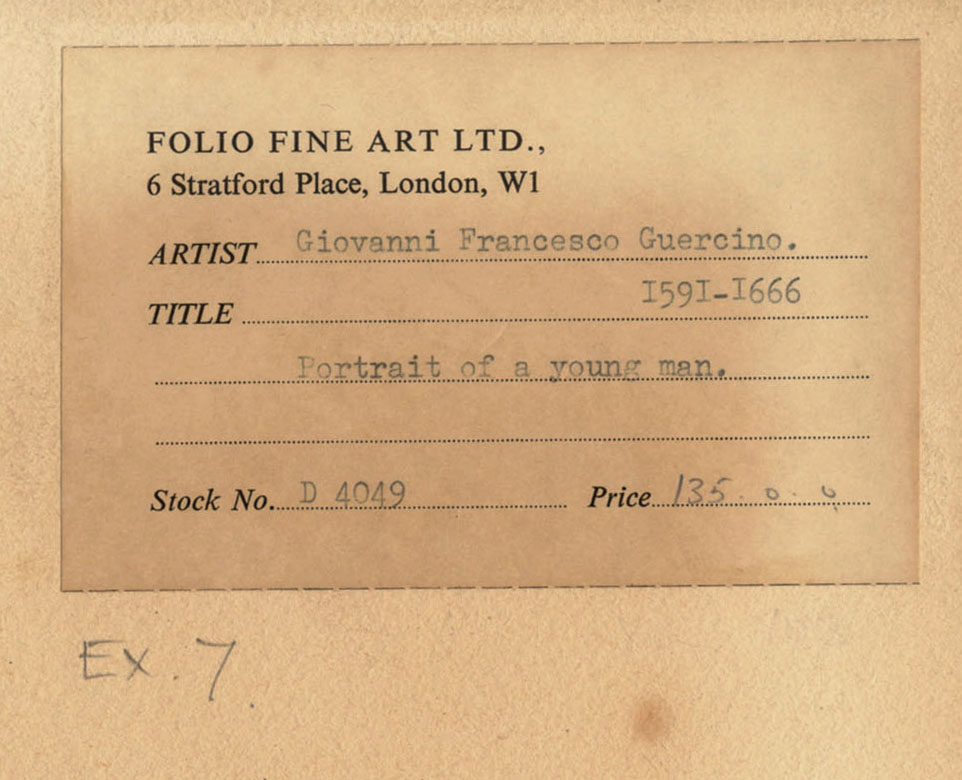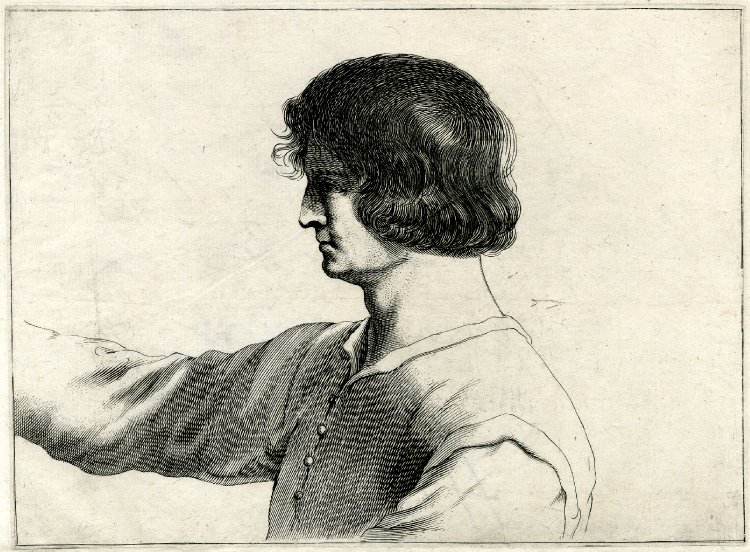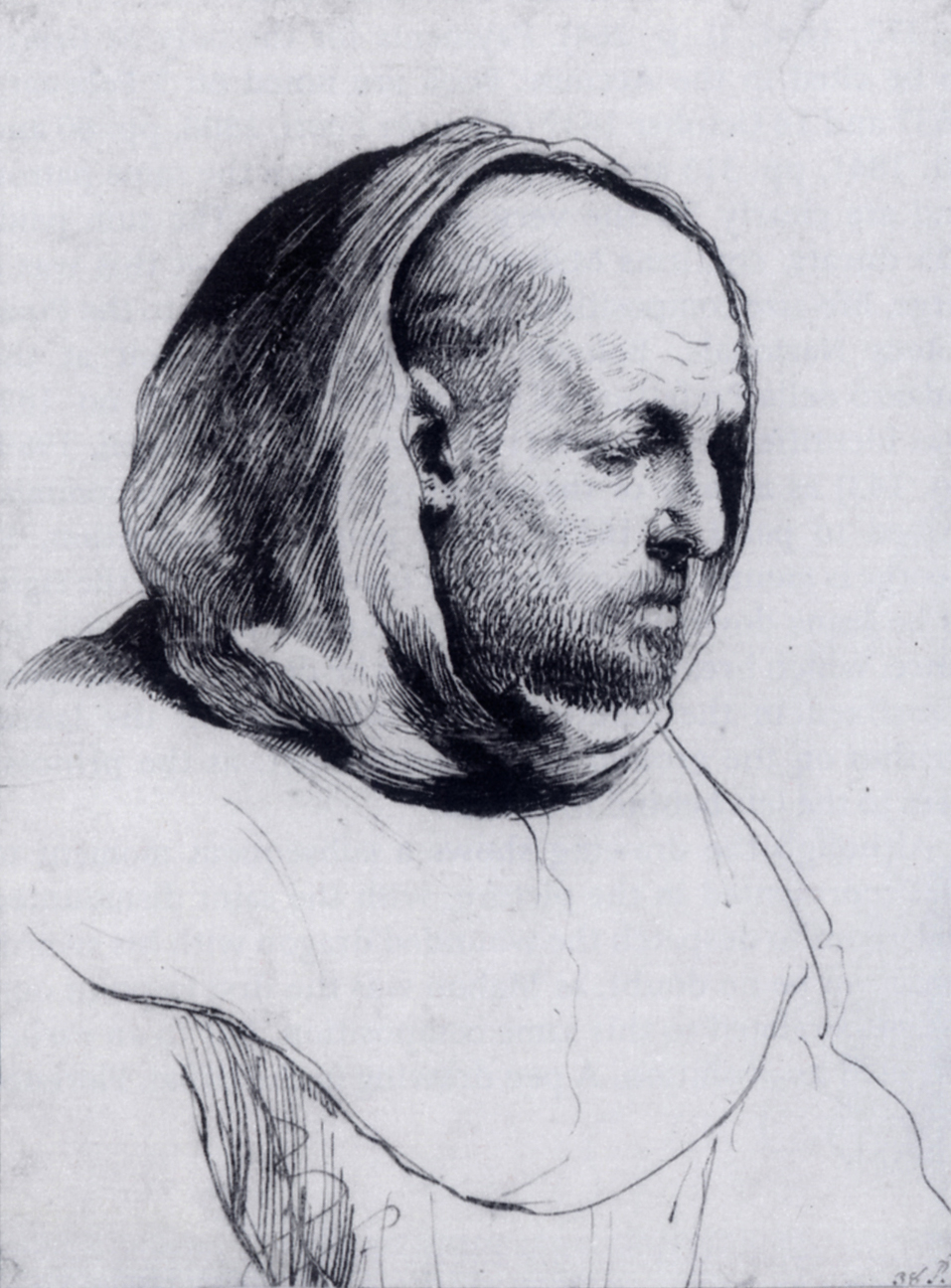GIOVANNI FRANCESCO BARBIERI, called GUERCINO (Cento 1591 – 1666 Bologna)
Giovanni Francesco Barbieri, called Guercino (Cento 1591 – 1666 Bologna)
Head of a Young Man in Profile
Pen and brown ink, 176 x 179 mm (6.9 x 7 inch)
Provenance
~ With Folio Fine Art, London, ca. 1970
~ Private collection, U.K.
***
Giovanni Francesco Barberi was nicknamed Guercino because he was guercio,or cross-eyed. Born in poverty in Cento, near Ferrara, he was largely self-taught, though he also served an apprenticeship. The glowing colorism and emotion of Lodovico Carracci's Holy Family with Saint Francis in Bologna influenced him profoundly, and Lodovico himself encouraged the young man. From 1614 to 1621, the year Pope Gregory XV summoned him to Rome, Guercino painted the altarpieces that are his most Baroque creations. With Lodovico's and Caravaggio's works pointing the way, Guercino brought the viewer into the painting's space, adding dramatic lights and darks and greater emotional intensity.
Throughout his career, Guercino's style underwent dramatic changes. In Rome he first felt pressured to paint in the popular classicizing style. Returning to Cento two years later, his dark shadows faded, strong movement disappeared, and details emerged distinctly in clear light. To "satisfy as well as he could most of the people, especially those who asked for paintings and had the money to pay for them, he had shown paintings in the lighter style," reported his first biographer. Guercino ran his Cento studio until 1642, when Guido Reni, who had loathed him, died. Guercino then moved to Bologna, taking over Reni's religious picture workshop and his role as the city's leading painter.
Guercino was a most prodigious draftsman, and many hundreds of his drawings survive. In them we can almost feel the artist's pen scratching the paper. Guercino's favorite medium was a goose-feather pen dipped in ink that allowed him to quickly record his ideas on paper. Touches of wash, areas of diagonal lines, and blurring effects of pentimenti (minor changes) heigthen the sense of drama and spontaneity.
The present powerful drawing was executed around 1640 and forms part of a group of carefully executed detailed head studies, which often served as studies for paintings or were intended to be engraved. A similar study of a Head of a Monk is preserved in a private collection (fig.).1
SOLD
1. Pen and brown ink, 239 x 181 mm; N. Turner and C. Plazzotta, Drawings by Guercino from British Collections, exh. cat. London (British Museum) 1991, no. 126, p. 152.
